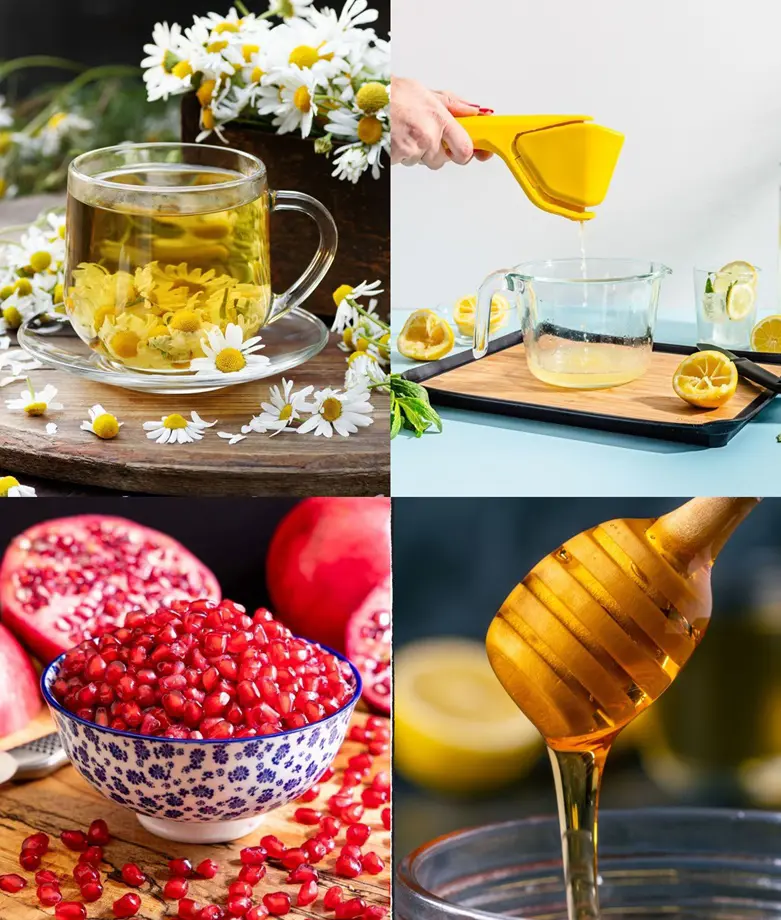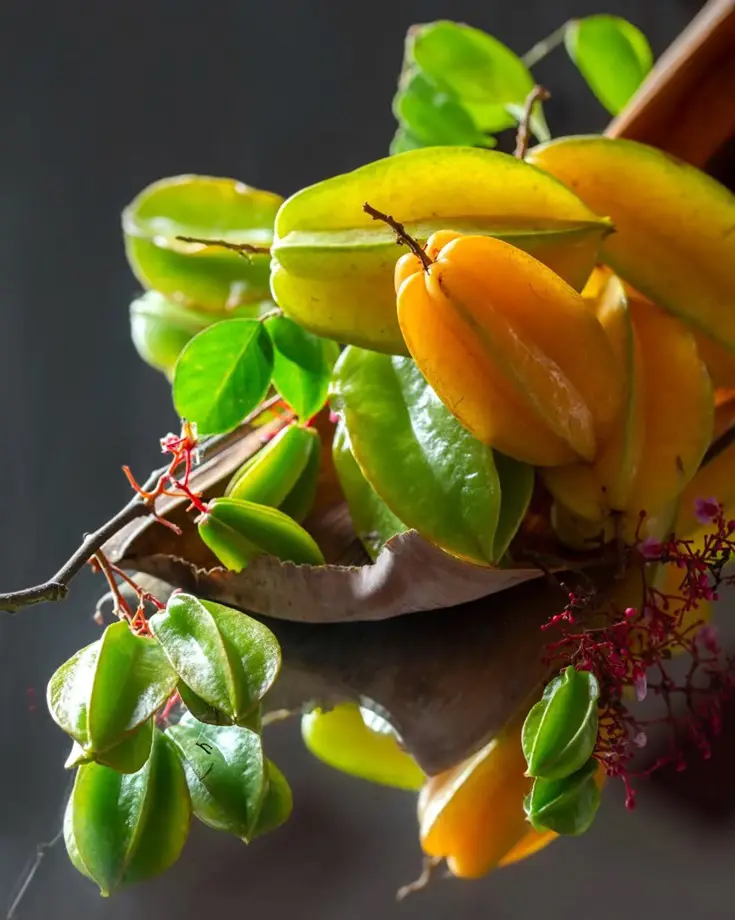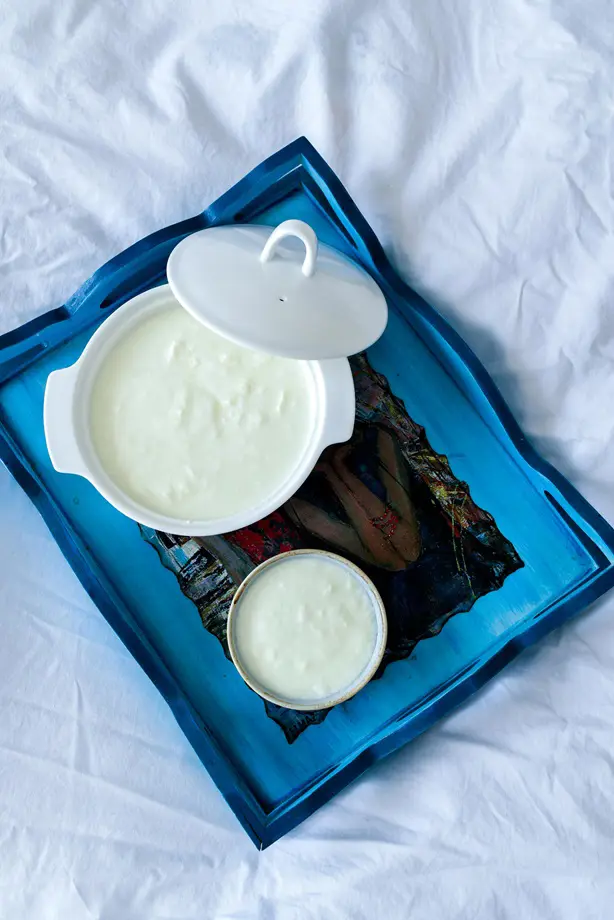How to Get Rid of Neck Pain: 10 Home Remedies To Fix Stiff Neck

This post may contain affiliate links. If you make a purchase through links on our site, we may earn a commission.
Neck pain is a common issue of today, affecting more than one-third population of the US. The common causes that often lead to stiff neck include sleeping in an awkward position that involves straining of the neck, sitting in a bad posture for long periods, and stress that causes muscle tension. The pain however can be managed if remedies are followed without a delay.
Here, we have brought ten effective home remedies for a stiff neck that can help address the neck issue promptly. The different varieties of home-based treatments that we are going to explore are known to offer relief and prevent the problem from being a chronic issue.
1. Apply Heat or Ice
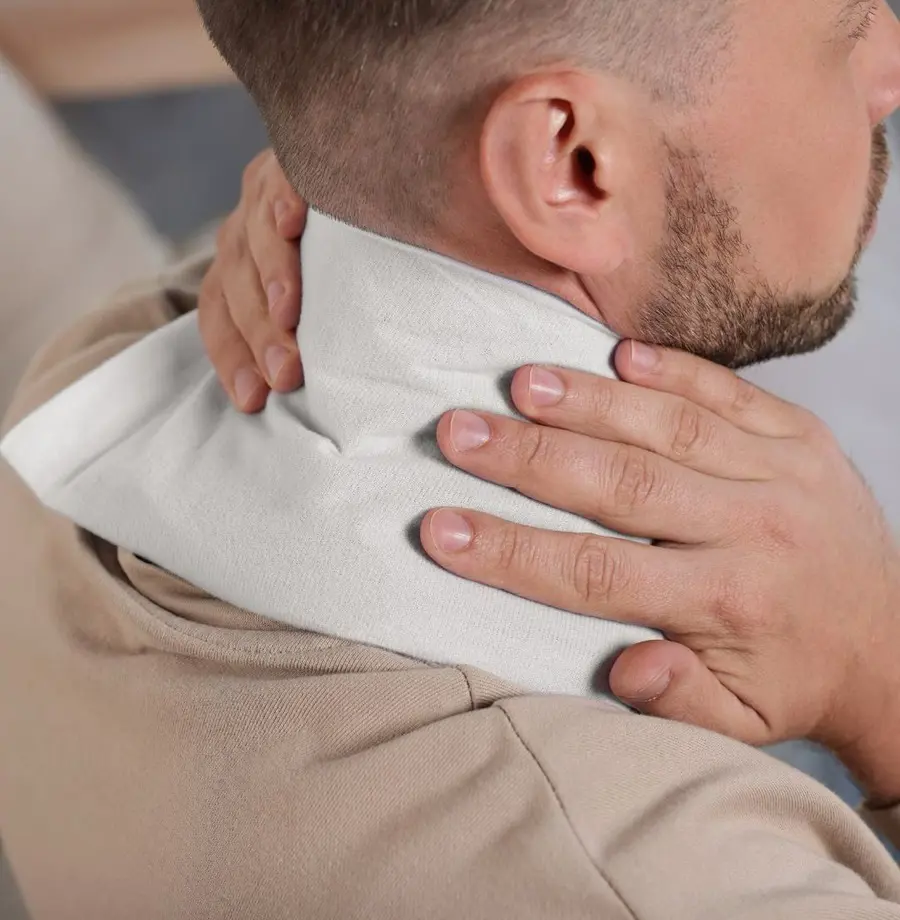
Ice and heat, both can relieve neck pain. Ice is for earlier stage of the neck pain while heat is much effective when the neck muscles are more toughened. Let's have a look in detail:
Ice
Ice is best used when the neck pain is acute. After 24 to 48 hours of the onset of the neck pain, apply ice pack to the numb area. After letting sit in for 15 to 20 minutes, you will observe reduction in swelling. You can use ice two to three times a day to heal quickly.
Heat
When the neck pain is an old friend, ice may not be the proper remedy. In prolonged cases, heat is more effective as it is ideal for chronic neck pain, stiffness, or muscle tightness.
Heat relaxes muscles in jammed region by increasing blood flow and slowly takes away the discomfort. To get back the flexibility, use heating pad or a warm towel and put it on the affected areas for 15 to 20 minutes. Make sure you are not exposing bare skin with extreme heat as it may cause burns.
2. Massage
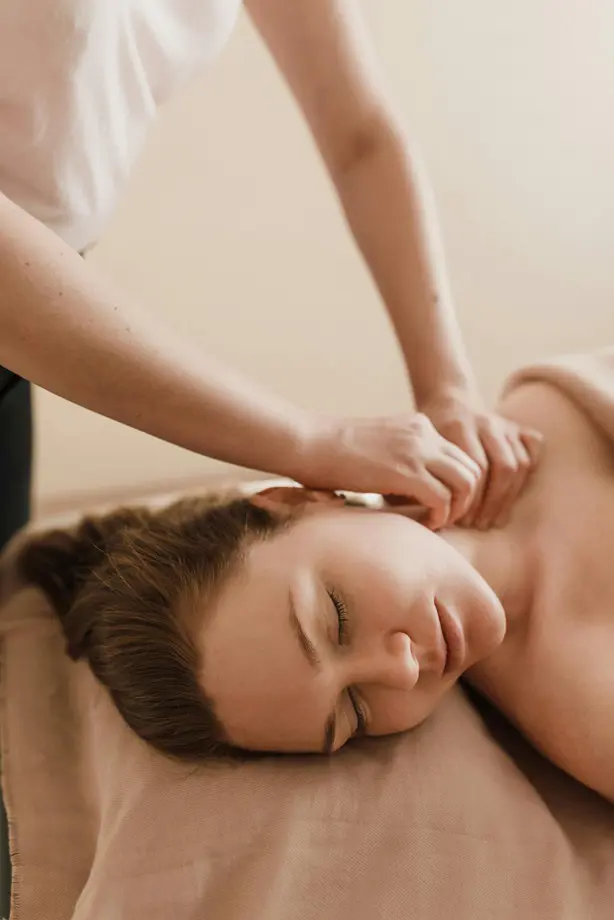
Massaging the painful area with gentle hands can make the neck muscles relaxed. Warmed oil when targeted on tension points can be a simple remedy to reduce pain and improve flexibility in the neck.
For the maximum benefits, you can use herbal oils that are soothing and also have anti-inflammatory effects. Peppermint and eucalyptus are the ones that are often used in healing pain in the body.
To apply, you can rub the oil in the painful areas and blend them for a few minutes. Massage gently using the fingertips in a circular motion. For the areas which are very sore/ stiff, spend extra time massaging them.
3. Gentle Stretching Exercises
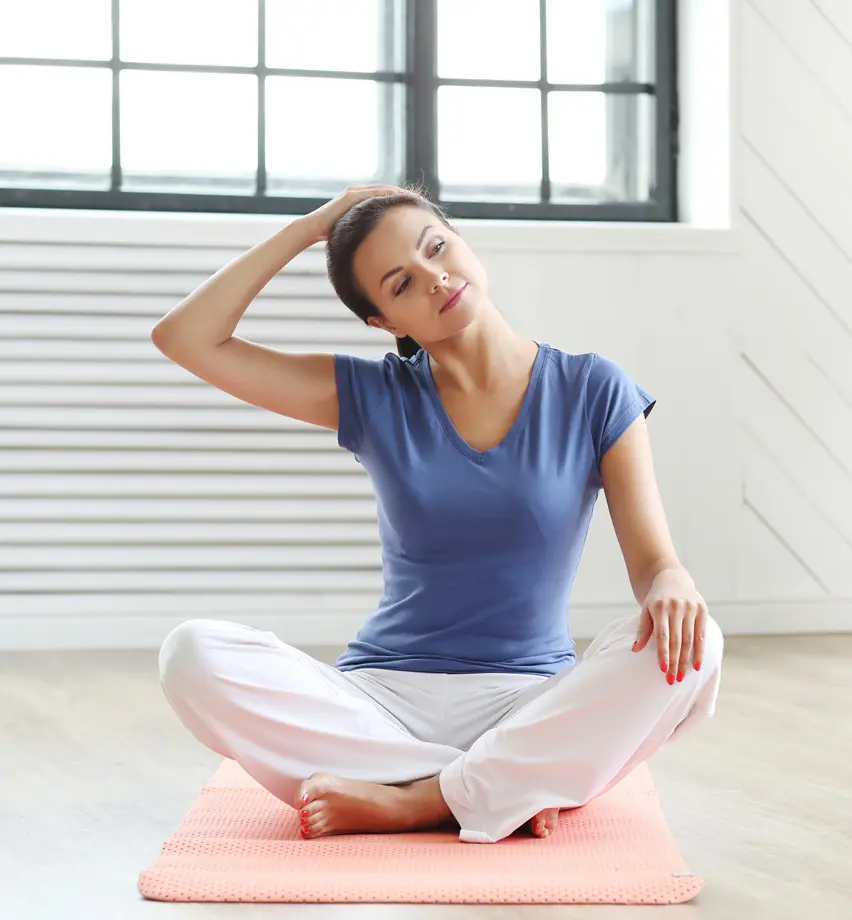
The goal of the stretching exercises is to relieve tension in the neck muscles. As a result, mobility improves slowly taking the pain away.
For Acute Pain
When you are dealing with acute neck pain, focusing on mild stretching exercises can help a lot for recovery. It's equally important to remember that the stretch should be controlled, and the neck shouldn't be pushed too hard to prevent injury from exacerbating.
Gentle stretching practices for acute pain are listed below:
Neck Tilts
- Forward Neck Tilt:
- Bring your chin towards your chest. Do it gently.
- Hold your neck in this position for around 10 to 15 seconds. Return back to normal position afterward.
- Do it three to five times.
- Backward Neck Tilt:
- After completing the forward tilt, proceed to the backward tilt.
- In a gentle manner, tilt your head upward. Hold when you see the ceiling.
- After holding for 10 to 15 seconds, return to normal position.
- Same as above, repeat three to five times.
- Side Neck Tilt:
Now it's time to tilt both sides of the neck, follow the steps below to perform the stretch:
- Tilt your head to the right shoulder. Once the head touches the shoulder, maintain the same position for 10 to 15 seconds.
- After the designated time, get back to the original position and then tilt towards the left shoulder slowly. The timing is the same, after 10 to 15 seconds, return back to normal position.
- Repeat the steps three to five times for each side.
- Neck Turn: It is a simple stretching exercise that involves the side muscles of the neck. Begin neck turn by slowly turning your head towards right, hold for 10 to 15 seconds and turn head to the left. Continue the process three to five times.
- Neck Retraction: Neck retraction is another easy-to-do exercise. Retract your head backwards, hold it for about five seconds and then release. Repeat the process four to five times.
- Shoulder Roll: This exercise is to release the tension build up in shoulder area. Roll your shoulders in a circular motion for five to ten times and then change the direction.
For Chronic Pain

When there is long-term muscle tension, then neck pain persists. There are different sets of stretching exercises for this as the tension issue is chronic.
Let's have a look at the effective exercises that help to make the neck muscles flexible hence enhancing mobility:
- Chin Tucks: This exercise is similar to forward neck tilt, you just have to tuck your chin toward your chest and hold the position for 10 to 15 seconds. This posture strengthens the muscles at the back of your neck.
- Neck Glide: This exercise is to improve the flexibility of the front muscles of the neck. The steps are simple, you just need to glide your head towards the chest, but without bowing the head down.
- Neck Extension-lateral Extension: This exercise targets the lateral muscles of the neck. This exercise is similar to the side neck tilt. First, tilt your head on one side of the shoulder followed by the other.
- Shoulder Shrug: Shoulder shrug is effective in releasing tension from both neck and shoulder. To do the exercise, you need to raise both of your shoulders toward your ears in a shrugging motion, hold for 5 seconds, and then release. Do this exercise 10 to 15 times to improve the overall flexibility.
- Towel Pull:
- This exercise helps stretch the muscles of the neck and upper back.
- Take a towel and hold it with both hands behind your head. Gently pull the towel down toward your chest while keeping your head straight and your neck aligned.
- Hold the stretch for 10 to 15 seconds, then release.
- Repeat this exercise three to five times.
- Others: Some other exercises that can be helpful to heal chronic neck stiffness include lateral extension, seated twist and cat cow. Including different exercises in your daily routine, depending on your comfort zone, can help improve strength, flexibility, and mobility in the neck and shoulder area, ultimately reducing chronic pain and preventing further discomfort.
4. Apply Collar
A soft cervical collar or neck brace acts as a perfect support for the neck. These devices are so designed that they won't allow pain to worsen by preventing further pain in the neck muscles.
The pressure buildup on the neck muscles and spine must be relieved for healing, which isn't possible if you these areas are constantly moved. By using a cervical collar or neck brace, you restrict the unwanted movements and hence allow them to rest and heal.
5. Epsom Salt Bath

Epsom salt is a cure for various types of pain and aches. The salt is the source of the natural compound magnesium sulfate, which has long been used in cure due to its muscle-relaxing properties.
When the salt is added in warm water, it is absorbed through the skin which then helps to relax tight muscles in the neck. Overall, salt helps the muscles to relax and also reduces inflammation of any kind.
Using Epsom salt in the bath is simple, just add about two cups of Epsom salt to the water-filled bathtub and stir water until the salt gets mixed. After the salt dissolves completely, soak yourself in the bath for at least half an hour, the timing is crucial because magnesium sulfate works only when it is properly absorbed in the body. The soothing nature of a warm bath, the healing properties of the Epsom salt and the blood circulation caused by the warmth of the bath, all of them together work hand in hand to release the neck tension.
6. Devil's Claw and Other Natural Remedies
Devil's claw is a traditional herb used as a natural remedy for pain. It can be found in different forms in the market like mineral bath salt, which can be used similarly in a warm bath as mentioned for Epsom salt.
As the herb has both anti-inflammatory and pain-relieving properties, they were widely used in the treatment of conditions including stiff necks and joint muscle pain.
These properties are mainly due to the presence of the active compound called harpagoside which can be a perfect solution to heal the affected muscles when one has a stiff neck.
Products like topical creams made from devil's claw are also available. It can be used in the affected area directly for localized relief.
Similar to devil's claw, ginger and turmeric are also natural remedies for pain, their anti-inflammatory properties are what help the neck pain reside. You can use these remedies as tea or use their oils in painful areas.
7. Posture Improvements

Poor posture is one of the main reasons behind neck pain. As we are based on desk work, that too for long hours, it's very common for us to not have a proper sitting position which can lead to muscle strain and discomfort of the neck.
One of the ways to get rid of neck pain is avoiding bad posture at any cost. To provide proper lumbar support to our body, when we are constantly sitting in the same position for a long time, choose a chair that supports your back. This can help us to maintain the natural curve of the spine.
As you sit in the chair, try to align your head with your spine, keep the shoulder relaxed and avoid leaning forward. Leaning forward for a long time especially when using mobile phone or computer can lengthen the process of healing.
8. Gels and Gel Patches
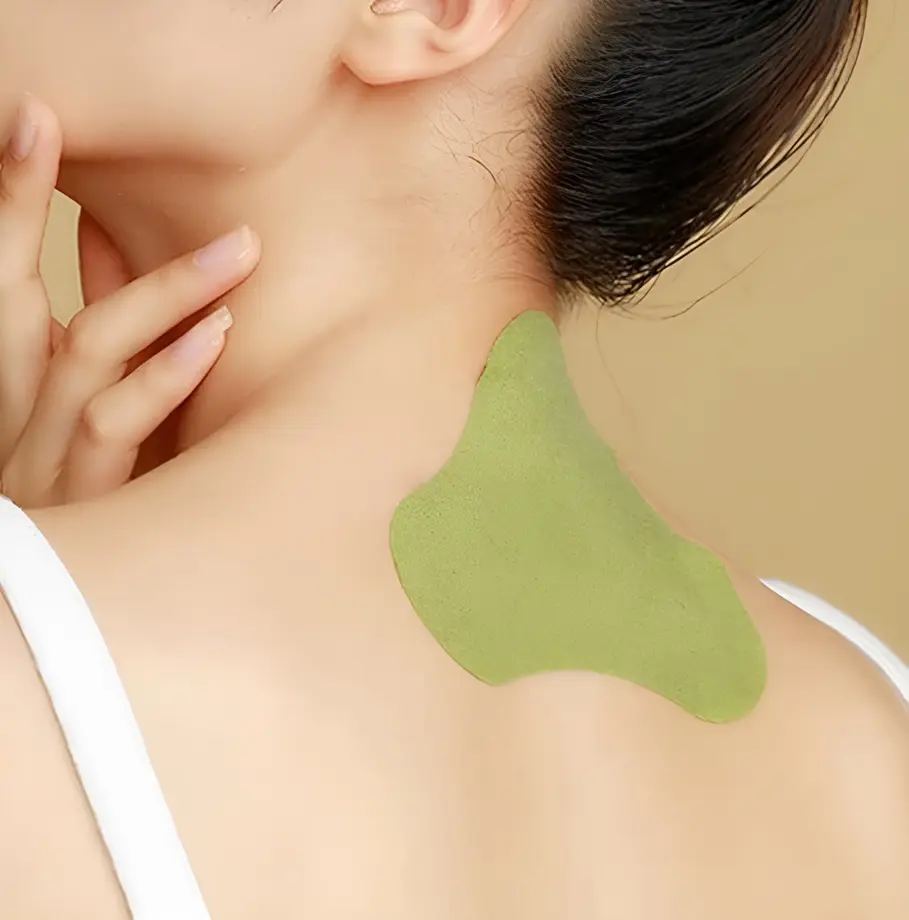
One of the popular remedies existing for stiff neck is gels or gel patches, formulated using compounds such as menthol. The cooling effect of menthol can ease the pain. It also has anti-inflammatory property that soothes the inflamed cells of then neck.
If you are using gels, you just need to apply a thin layer of gel to the affected area and massage gently. However, the use of patch is a little different, you need to adhere it to the painful areas for instructed time. The working of gel adhesive might be different from menthol-based gels, some of the patches are made to numb the pain site only temporarily.
9. Fixing Sleeping Position

When sleeping position is poor, we tend to suffer from neck pain immediately the next morning. As bad sleeping posture is the cause of the stiffness, maintaining proper sleep position can help in relieving the neck stiffness.
Bad sleeping position is one of the common causes of neck stiffness, as improper alignment of the head and body can strain the muscles and joints in the neck. To prevent the pain from becoming chronic, it's important to fix this issue.
There is no strict rule for this. You just have to maintain the height of the pillow in such a way that it supports your neck, in a natural posture. You can also opt for a cervical pillow or a memory foam pillow if you often fail to maintain the advised alignment.
Things To Avoid
When you are in pain, it's equally important to know what sleeping postion aren't good for you, the ones that can further induce the pain. Here are a few positions to be cautious of:
- Avoid sleeping on your stomach, as this position forces your neck to twist, which can lead to strain and discomfort.
- Sleeping with your neck bent at a sharp angle can cause muscle stiffness, so it's important to keep your neck aligned with your spine.
- Using a pillow that is too high or too firm can push your neck into an unnatural position, resulting in pain and tension.
- When sleeping on your side, make sure to use a pillow that properly fills the gap between your neck and the mattress to maintain spinal alignment.
- A soft mattress might not provide enough support for your neck, so consider choosing a medium-firm mattress to promote proper posture while sleeping.
10. Relaxing Technique
Though might sound unbelievable, stress and tension are also contributors to neck stiffness. So, to get rid of the neck pain caused by these internal stressors, you can practice methods that can calm the mind which in turn can help release muscle tightness.
Some of the relaxation techniques you can incorporate into your routine are included below:
Deep breathing is a simple yet effective remedy you can try. Select a place where you can sit comfortably and in a straight posture, take slow, deep breaths.
Another method known as progressive muscle relaxation (PMR) is also a suitable technique to relax different muscle groups in your body. This tension-releasing process starts from the toes and progresses upwards.
Recent posts
Lifestyle
Lifestyle
10 Home Remedies For Loose Motion and Diarrhea
When in tough times, due to issues like loose motion or diarrhea, it would be reassuring for you to know that there are remedies, that also in your own pantry! Whatever the cause may be, be it an infection, food intolerance, or stress, these ingredie...
Lifestyle
How To Eat A Star Fruit
Star fruit is a tropical fruit known for its unique star-like appearance. The fruit can be enjoyed simply, on its own or by adding it on recipes where its extra burst of color and sweet-tart taste can blend well with other ingredients. Whichever way ...
Lifestyle
Is Yogurt Good For You?
Yogurt is a dairy product, a nutrient-packed food. It is often hailed as a health food and there are good reasons for this. If we look into the nutrients present in yogurt; it has numerous of them essential for functioning of our body. In this articl...
Lifestyle
Is Vegan Diet Actually Healthy?
A vegan diet is considered healthy but not most of the time. As all vegan foods have many beneficial nutrients, they also lack some which often sparks the debate. Without animal products, a vegan diet can be believed to have significant health benefi...
Lifestyle
How To Eat Crawfish The Right Way
A crawfish is a small crustacean that resembles a tiny lobster. Though small in size, this freshwater creature is equally delicious as any other seafood, they are tender, sweet and a little salty. Enjoying crawfish may seem challenging as they are ti...
Lifestyle
Expert Ways To Eat Poppy Seeds
Poppy seeds are small yet powerful because of their nutty taste and crunchy texture. Mild and gentle addition to any dish, they are a staple ingredient in cuisines around the world; you can find them in curries in India and in baked goods in Europe. ...
